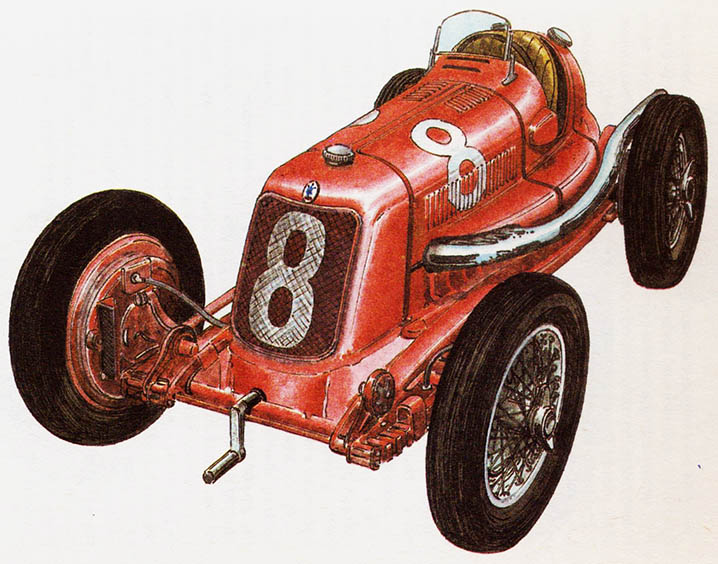MASERATI 8 CM – year 1933
Officine Alfieri Maserati SpA, Bologna, Italy.
W 1932 year as a result of the long-term consequences of the accident, to whom he succumbed at the Diatto factory, the perfect organizer died, manager and constructor Alfieri Maserati. His brother Ernesto took over the management of the company with the help of another brother – Bindo maserati.

Officine Alfieri Maserati SpA, Bologna, Italy.
A year later, after the successful 8C-3000, a new model appears 8 CM (M - single-seater) - a single-seater racing car with a narrow body. The original eight-cylinder engine with two camshafts in the cylinder head retained the dimensions of the cylinder bore and stroke, the compression ratio was lowered to 5,6 : 1. Thanks to the Roots compressor, the engine gains power 191,4 kW (260 KM) by 5800 RPM. For the first time in a racing car, hydraulic brakes are introduced. Maserati 8 CM has two rigid bridges suspended on longitudinal leaf springs. The chassis weight is slightly more than the predecessor model. However, the driving characteristics of the vehicle were insufficient in relation to the maximum speed (250 km/h), what he could achieve.
To the core team of players – Louis Beans, gigione (Luigi) Arcangeli and Achille Varzi - also joined by the famous Tazio Nuvolari, which came from the company Alfa Romeo. Giuseppe Campari also rode at Maserati's, winner of the French Grand Prix in 1933 year. Maserati was very successful this year. Nuvolari won the Belgian Grand Prix at Spa —Francorchamps with average speed 142,77 km / h ahead of two Bugatti riders and finished second in the Italian GP in Monza, where a tire defect prevented him from winning. This race was won by Fagioli, which "replaced” Nuvolari at Alfa Romeo. Nuvolari also led the Spanish Grand Prix, but the race did not end because of an accident. A year in all 1933 was one of the most successful for Maserati, and her cars have won many other races as well, np. Nicei Grand Prize, Coppa Acerbo and others.